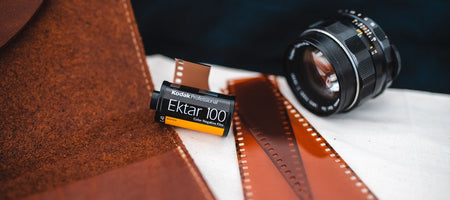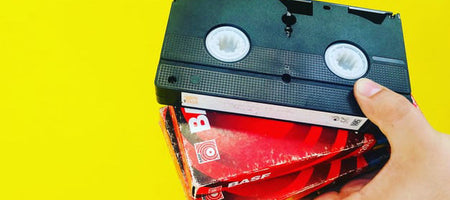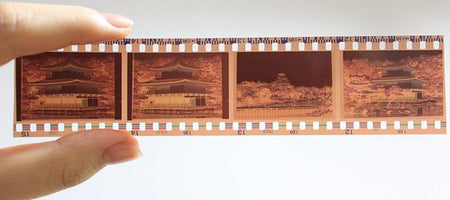The term photography stems from the Greek words (what word doesn’t root back to Greek, right?) photos, or phos, meaning “light” and graphein, or graphe, meaning “to draw.” That means, “to draw with light” is the literal translation (and a cool one at that) coined in the 1830s to describe the new technology that would forever change how we commemorate moments in time.
So to honor the picturesque path that gave us polaroids, one-hour photo shops, digital cameras and made the term “Instagramable” possible, we’re going to go back to where it all began. Here’s a brief history of photography.
A Glimpse at the Evolution of Film
1830s
It all began in 1839, only it didn’t use film to start. Rather, the earliest practical photographic process used light-sensitive chemicals to form on the surface of a silver-plated copper sheet. Hey, you’ve got to make do with what you’ve got, right? The process was called daguerreotype, which sounds like more like a monster from the upside down in an episode of Stranger Things than a photography term.
1840s
Then in 1841, a new process called calotype (stemming from the Greek word kalos, meaning “beautiful” and tupos, meaning “impression”) was introduced by a gent named William Henry Fox Talbo. He used paper coated with silver iodide. This process of ‘printing-out,’ required the paper to be exposed inside the camera until the image was fully visible. This resulted in an incredibly long exposure – about an hour – to produce an acceptable negative.
1850s
Fast forward about a decade, and thin glass plates coated with photographic emulsion became the new standard material for use in cameras. Although fragile and heavy, this 1850s glass-based process offered better quality and at the time was relatively cheap. In fact, up until the early 2000s, glass plates were still used for astrophotography and electron micrography – making it a special use case in the name of science.
1880s – early 1900s
Jump to 1885, and the first flexible photographic roll of film was sold by George Eastman. This film roll was actually a coating on a paper base, and the first transparent plastic film roll – also known as nitrate film, a highly flammable (yikes) material – soon followed in 1889. Thanks to Kodak’s cellulose acetate process – or “safety film” – introduced in 1908, the hazardous nitrate film slowly weeded itself out of production, despite being tougher, cheaper and slightly more transparent. But we can only suppose that people valued their lives more than their film, hence the switch.
20th Century – present
With the invention of plastic in the early 20th century, the process of film was forever revolutionized. More expensive than glass at first (got to love supply and demand), it quickly became the cheaper, safer standard once it became more available. This new norm lasted for decades until instant cameras came to market followed by a new revolution of digital photography.
First there were polaroid cameras, then disposable cameras, next came the era of digital cameras and now nearly everyone has two better cameras on their smartphones than all the previous iterations combined. And the craziest part? The camera isn’t even the main feature on the device. When you look back, it’s amazing to see how far – and fast – the evolution of the camera has come.
How Do Film Negatives Work?
At this point, you’ve already learned how negatives were once commonly made on thin, yet heavy sheets of glass (before plastic became the norm), and that the earliest negatives were made on paper – event silver-plated copper. But how does the negative process actually work?
When a photo is taken, light is reflected off the subject and passed through a lens onto a film. There’s obviously a few more steps that require chemical reactions and science stuff that we won’t get into for brevity sake, but what is left of your original film is a developed negative – the reverse image of the picture you took. The black areas are where the greatest amount of light struck the image, while the lightest parts are where the scene was actually darkest – or had reflected no light onto the emulsion.
But since putting a negative into a picture frame just doesn’t cut it (actually negatives are borderline creepy – you ever seen a person’s smile in a negative? Terrifying.), there’s more to the process in order to give you that finished positive and pretty picture. Light needs to pass back through the negative onto a photographic paper (specially coated with light-sensitive silver compounds), and this exposure is called printing, which we all know and love. And the rest is history.
Got Any Negatives Lying Around?
If you’ve got any negatives captive in your attic or basement storage, let southtree digitize them and bring new life to your old memories. After all, a memorable picture looks a lot better in a frame or on your desktop than in a dusty box in your attic.













